(b) This diagram shows the experimental setup (left) used to analyse the spectrum of a sodium discharge lamp with a diffraction grating with lines , and the spectral lines observed (right) in the developed photographic film.

(iv) Calculate the angle produced by the second green line.


Important Questions on Superposition of Waves
(b) A student sets up an experiment to investigate the interference pattern formed by microwaves of wavelength . The apparatus is set up as in Figure. The distance between the centres of the two slits is . The detector is centrally placed from the metal plates where it detects a maximum. The student moves the detector across the bench parallel to the plates. Calculate how many maxima the detector will be moved through.
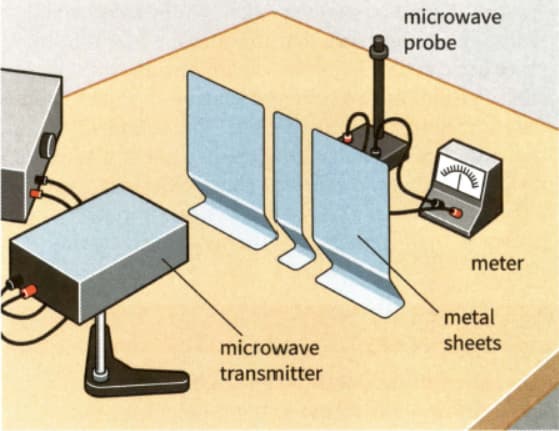
A student sets up an experiment to investigate the interference pattern formed by microwaves of wavelength . The apparatus is set up as in Figure. The distance between the centres of the two slits is . The detector is centrally placed from the metal plates where it detects a maximum. The student moves the detector across the bench parallel to the plates.
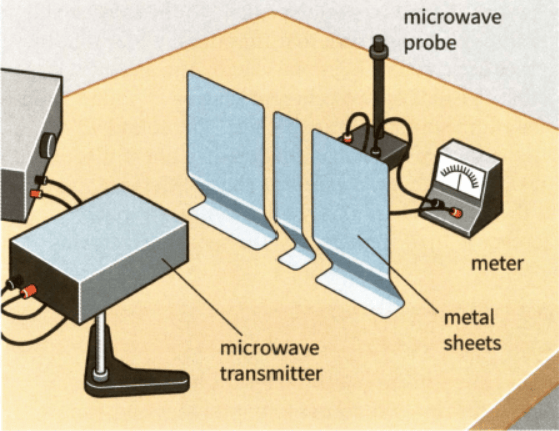
(a) Explain what is meant by the diffraction of a wave.
(b) This diagram shows waves, in a ripple tank, spreading out from two slits.
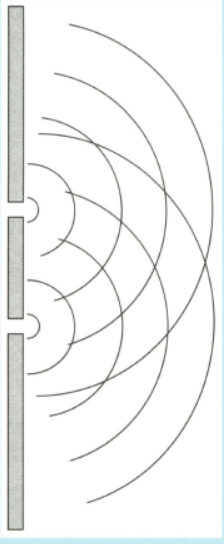
(i) a line showing points along the central maximum- label this line .
(b) This diagram shows waves, in a ripple tank, spreading out from two slits.
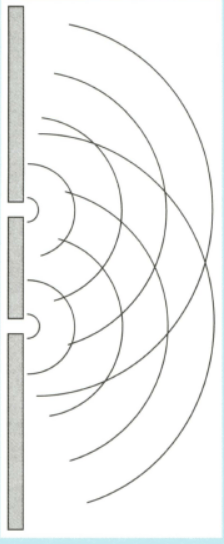
(ii) a line showing the points along first maximum - lable this line .
(b) This diagram shows waves, in a ripple tank, spreading out from two slits.
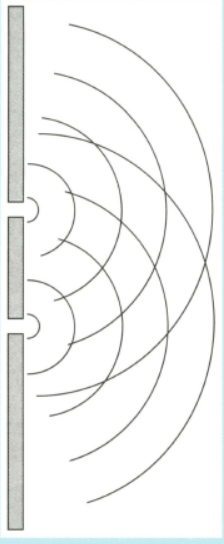
(iii) a line showing points along one of the first minima -label this line minimum.
